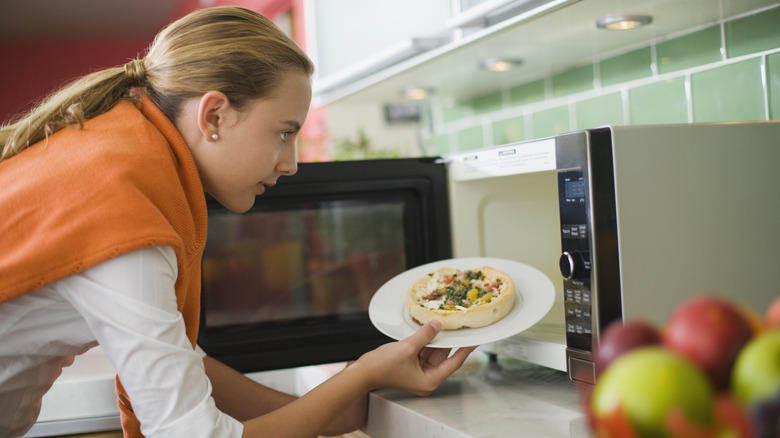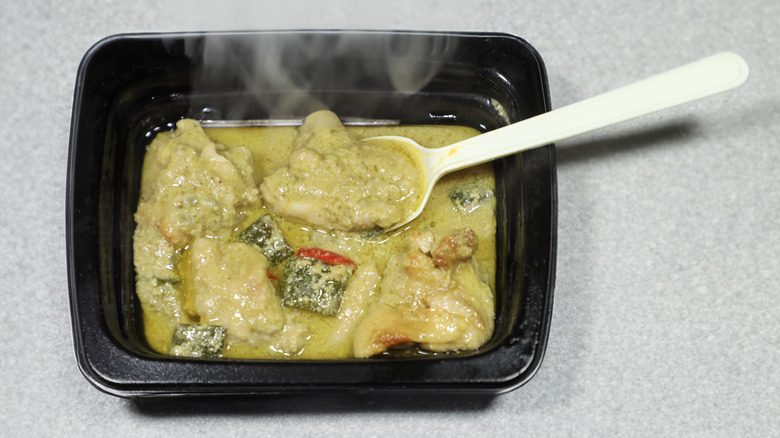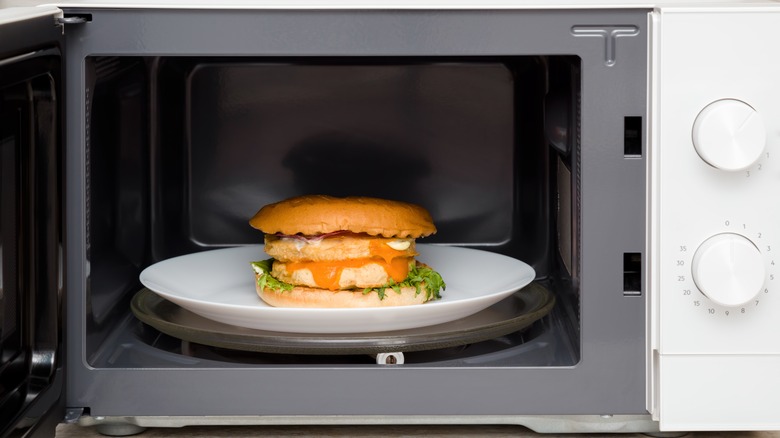The Best Way To Microwave Leftovers So There's No Cold Center
We've all been there: You're reheating leftovers in the microwave, expecting a warm meal to come forth, only to take the first bite and find it disappointedly cold. Properly heating leftovers can be tricky, especially as we try to get the food to taste the same as when it was freshly made.
It's all about how you arrange the food, however. Instead of piling everything in the middle of the plate, spread the food in a ring, leaving the center empty. This simple trick allows your microwave to evenly hit all corners of your meal, reducing the chance of undesired cold spots.
First, start by placing your food in a circle around the edge of the plate, ensuring it's evenly spread out. Cover it with a microwave-safe lid to lock in steam, which will also promote uniform heating. Also, stir halfway through the cooking time to further distribute heat. According to the U.S. Department of Agriculture (USDA), it's important to reheat food to an internal temperature of at least 165 degrees Fahrenheit to ensure no harmful bacteria are left; using a food thermometer can help you discern when it's reached this temp.
The science behind microwaves is the reason for uneven heating
Microwaves might be great for simple tasks, but generally, they can only penetrate 1-1½ inches of food. This limitation explains why piling food too high on the plate often results in those dreaded cold centers — which are not just unappetizing, but also a potential breeding ground for bacteria.
The reason for this uneven heating lies in how the actual heat waves move within the appliance. As the waves bounce around inside, they do so non-linearly and don't always distribute heat uniformly, leaving some areas undercooked. Spreading the food on the plate, however, creates a larger surface area, making it easier for the waves to hit more areas of the food.
Learning about your microwave power levels can also improve your heating experience. Different power levels serve different purposes — from thawing to cooking — and using the right one can ensure your food comes out delicious each time. However, many power settings are model- and food-specific so read your user's manual to choose the right one.
The right containers and cycles for even reheating
When heating leftovers from your fridge, there's more to consider than just how you arrange the food on your plate. The container, method of covering the food, power settings, and even the way you stir can all impact the results. But there are some helpful tips that can avoid these issues.
First, use a microwave-safe container to preserve the food's integrity and prevent damaging the appliance. While glass and ceramic are usually safe bets, be cautious of any metallic accents on dishes that could cause sparks. Paper towels can also be useful — place one over your food to prevent splatters, and for better results, dampen it slightly to help retain moisture while heating.
For larger portions, consider microwaving in increments. Instead of running a single long cycle, try heating in one-minute intervals, stirring between each round. This helps the heat distribute evenly and avoids those cold spots. Additionally, using lower power settings can prevent the outer edges from overcooking while the inside remains cold. Lastly, check whether your rotator is spinning properly if you're consistently getting uneven heating and no hack seems to fix it.



